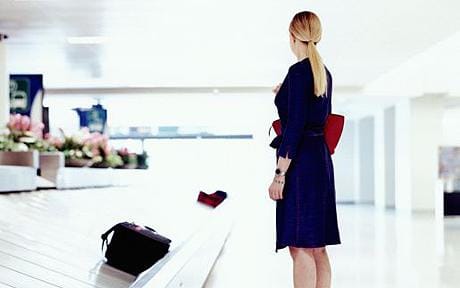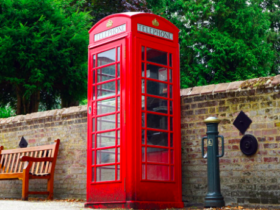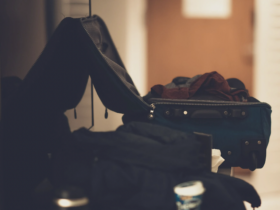Checked Baggage
Checked bags experience their own travel odyssey. Let us examine air travel from a checked bag’s point of view.
The bag arrives at the airport freshly packed, perhaps over packed, where it is dragged from the car trunk to the scale at the ticket counter or curb. Some airports load checked bags on conveyors to a TSA screening area in the bag room behind the ticket counter. Some require passengers to take them to a central TSA inspection area. TSA passes the bag through a machine that looks like hospital equipment which scans the contents.
If the contents look suspicious or your ticket reflects a suspicious reservation, the bag will be opened and pawed through. If they open your bag, they are required to leave a message stating that they were inside. If the bag contains items on the lengthy ‘forbidden items’ list, such as spray starch or lighter fluid, you will be paged and informed. If you do not answer the page, TSA will document removal of the item and give it to the airline.

This is a good time to discuss locks. If a bag is locked, TSA officers may be curious, nay suspicious, about why it is locked and decide to look inside even if no nefarious objects show up on the scanner screen. If it is locked, they report their interest to the airline which pages the traveller to return to the ticket counter to open the lock. If the traveller does not respond, TSA will cut the lock. If you must lock your bag, stand by while it is inspected in case you are summoned.
The bag arrives in the bag room, usually by conveyor, often landing in a pile of other bags, perhaps falling off the end of the conveyor onto the floor. The bag room, also known as the makeup room, is the warehouse-sized area behind the ticket counter lined with baggage carts. Carts are designated for imminent flights and bags are put on the carts as they arrive. Hub airports may use automated sorting systems to route bags to the correct cart.
Before and during passenger boarding, baggage carts are towed planeside and the bags are scanned as they are loaded on a conveyor belt to the cargo hold where a ramp worker crouches painfully inside, cramming as many bags in the tight space as possible. Stacking bags to maximize space is an art form.

Tight bag storage also reduces movement and helps prevent chafe against other bags, cargo bay walls, and fasteners in the metal floor as the plane banks and vibrates. You do not feel the movement in the cabin, but bags are not so lucky. They are secured inside the cargo bay with net curtains fastened from the ceiling to the floor to control shifting.
Upon arrival, the process is reversed. Ramp workers remove the bags, scan them, and load them on awaiting carts. Occasionally, bags fall off the conveyor. They might even fall off carts. It does not happen often. If the bag is connecting, it is delivered to a bag room and sorted to the cart of the connecting flight. Sometimes bags bypass the bag room and are delivered directly to their connecting flight.
At the final destination on the bag tag, ramp workers deliver bags to the BSO on a conveyor system, also known as a carousel, where they ride around until they are dizzy. The conveyor system is a closed loop. Bags set on one conveyor will not end up on a different one. Their paths do not cross.
Meanwhile, passengers are en route to Baggage Service as well. At the carousel, bags and passengers are reunited and it feels so good. Even now, if you have any confusion, just dial Easyjet contact number and ask the expert professionals and get your queries resolved.
























